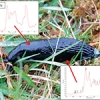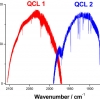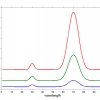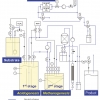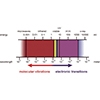Articles
Complementary spectroscopic analyses of varnishes of historical musical instruments
For the past two centuries, the nature of the varnishes coating historical instruments has been a much debated subject. Focusing in particular on the varnishes used for coating violins made by the Italian instrument-maker Antonio Stradivari, numerous hypotheses have been raised by instrument-makers, experts, musicians and chemists, without reaching a general understanding of the ancient varnishing techniques. A few years ago, we decided to work on this topic using several complementary approaches for materials characterisation and study of historical sources (ancient varnish recipes, etc.).
Investigation of mucus using Fourier transform infrared spectroscopy
The growing use of Fourier transform infrared (FT-IR) spectroscopy as a tool for quality checking amongst other things foodstuffs, industrial products and pharmaceuticals begs the question of how this technology could be applied to quantifying aspects of the internal environment of living organisms. To do this requires knowledge of the types of exudates and secretions that organisms produce. Usefully, all organisms do this and, as such, the potential to look into the internal environment of living organisms is now being realised. My particular interest is in molluscan mucus as a measure of both species identification and environmental monitoring. This interest has led onto considerations of how monitoring of mucus could be used in other organisms, particularly humans. This article hopes to provide a brief current overview of the use of FT-IR spectroscopy in the investigation of mucus from a variety of organisms.
Studying highly reactive organometallic complexes with fast time-resolved infrared spectroscopy using external cavity quantum cascade lasers
Often, chemists are interested in the most efficient way of converting our starting materials into the desired product. A huge number of reactions proceed via the production of intermediate species which are usually short-lived and difficult to detect. Such intermediates are considered to be of great importance because it is their reactivity which can determine the outcome of a reaction and, hence, the efficiency with which the final product is made. This can have widespread importance across the whole of chemistry, ranging from pharmaceutical and organic synthesis to catalysis and materials chemistry.
Something has happened to my data: potential problems with standard normal variate and multiplicative scatter correction spectral pre-treatments
This column has been developed from two recent publications by Tom Fearn. "The effect of spectral pre-treatments on interpretation” and "On the geometry of SNV and MSC"
Where there's muck there's brass! A look at anaerobic fermentation monitoring using molecular spectroscopy
A.N. Davies,a H.M. Heiseb and D.F. Ihrigc
aProfessor, SERC, University of Glamorgan, UK, Director, ALIS Ltd, and ALIS GmbH—Analytical Laboratory Informatics Solutions
bISAS—Institute for Analytical Sciences at Dortmund University of Technology, Bunsen-Kirchhoff-Str. 11, D-44139 Dortmund, Germany
cUniversity of Applied Sciences of South-Westphalia, Frauenstuhlweg 31, D-58644 Iserlohn, Germany
Near infrared reflectance spectroscopy in ecological studies of plant-animal interactions
The enormous variability in the concentration of plant toxins and nutrients in trees, shrubs and forbs requires extensive sampling to accurately represent the nutritional and toxicological landscape and this is an ideal application for quantitative near infrared (NIR) reflectance spectroscopy. The speed of NIR spectroscopy analysis makes it ideally suited to environmental monitoring and ecological investigations where large numbers of replicates need to be measured. Several recent studies, including one focused on underwater plants on the Great Barrier Reef and the second in Bolivian rainforests, show the power of NIR spectroscopy to address large-scale variability in plant–animal interactions.
Exploring the "forgotten" region: an update on NIR spectrometry
Following on from our previous foray into the UV-visible area of the spectrum, in this article we discuss its nearest neighbour in the spectral scale, namely near infrared (NIR) spectrometry. The NIR spectral region lies between 780 nm and 2500 nm (4000 cm–1 to 12,800 cm–1) bridging the more well-known and analytically used regions of the UV-visible (190–780 nm) and the infrared (4000–600 cm–1).
Low temperature oxidation catalysis for Diesel engine emission control by FT-IR
In the present study, operando infrared (IR) spectroscopy was used to investigate under realistic conditions the oxidation activity of Pt and Pd supported on different oxides, with the aim of generating mechanistic information that will be used for the design of improved formulations.
In-line monitoring of coating processes by near infrared reflection spectroscopy
It is shown here that NIR reflection spectroscopy is able to follow even small variations of both the conversion and the thickness of thin coatings and that it accordingly can be used as an efficient in-line measuring method.
Fourier transform infrared spectroscopy applied to the characterisation of inks in old printing plates and stamps
Our laboratory has received several requests from public or private institutions to solve problems related to conservation and restoration of samples from cultural heritage. A brief description of the FT-IR methodologies used to solve some of them are detailed within this article.
Back to basics: multivariate qualitative analysis, canonical variates analysis
A.M.C. Daviesa and Tom Fearnb
aNorwich Near Infrared Consultancy, 75 Intwood Road, Cringleford, Norwich NR4 6AA, UK. E-mail: [email protected]
bDepartment of Statistical Science, University College London, Gower Street, London WC1E 6BT, UK. E-mail: [email protected]
Back to basics: qualitative analysis, introduction
A.M.C. Davies and Tom Fearn
Norwich Near Infrared Consultancy, 75 Intwood Road, Cringleford, Norwich NR4 6AA, UK. E-mail: [email protected]
Department of Statistical Science, University College London, Gower Street, London WC1E 6BT, UK. E-mail: [email protected]
Ultrafast 2D-IR spectroscopy: method and applications
Since the first experiment was performed nearly a decade ago, ultrafast two-dimensional infrared (2D-IR) spectroscopy has emerged as an exciting non-linear ultrafast laser technique for probing molecular structure and solute–solvent interaction dynamics in a range of systems of chemical and biological relevance.
Back to basics: the "final" calibration
The starting point for this column is the last one from last year! In that column TD began what was intended to be a two-part story but has, with this column, become a story in four parts. There were required topics we had not covered and we need to begin this column by completing the discussion of removing multiplicative effects by describing what the two most popular methods do to NIR spectra.
Combined infrared and visible spectroscopic ellipsometry study of thin polymer layers
Thin polymer layers on solid substrates are of high technological importance due to their increasing potential for applications in electronics, sensors, nanotechnology and biotechnology. Appropriate characterisation methods are necessary for the design and analysis of devices made using such materials. This review article focuses upon presenting the many analytical possibilities for quantitative evaluation of the optical constants and thickness of polymer layers by combined application of spectroscopic ellipsometry (SE) in the visible (vis) and infrared (IR) spectral range.
Back to basics: removing multiplicative effects (1)
The last TD column showed the effect of calculating second derivatives on a set of 100 spectra, which will be the starting point for this column.
Protein reactions: resolved with tr-FT-IR
In the post-genome era, the focus of life science is shifting to proteins. Based on the difference between the various states of the protein, time resolved Fourier transform (tr-FT-IR) spectroscopy can selectively detect, with nanosecond resolution, reactions of the amino acids, the ligands and specific water molecules in the active centre of the protein, thereby providing a detailed understanding of the reaction mechanism. Malfunctioning of proteins is the cause of many diseases. Thus, the understanding of structure, function and interaction of proteins at the molecular level is essential for the development of drugs for a rational molecular therapy.
High resolution infrared studies at the Rutherford Appleton Laboratory Molecular Spectroscopy Facility: Part 2
The University of Leicester began an investigation to determine whether useful information on PAN (Peroxyacetyl nitrate) could be obtained from MIPAS data using the MSF absorption cross-sections.
NIR evaluation of the quality of tea and its market price
This article focusses on the application of near infrared (NIR) spectroscopy as a potential substitute to the sensory evaluation of tea quality.
Back to basics: spectral pre-treatments, derivatives
This column is about the most basic of pre-treatments, which has been used in spectroscopy well before the word "Chemometrics" was invented.


